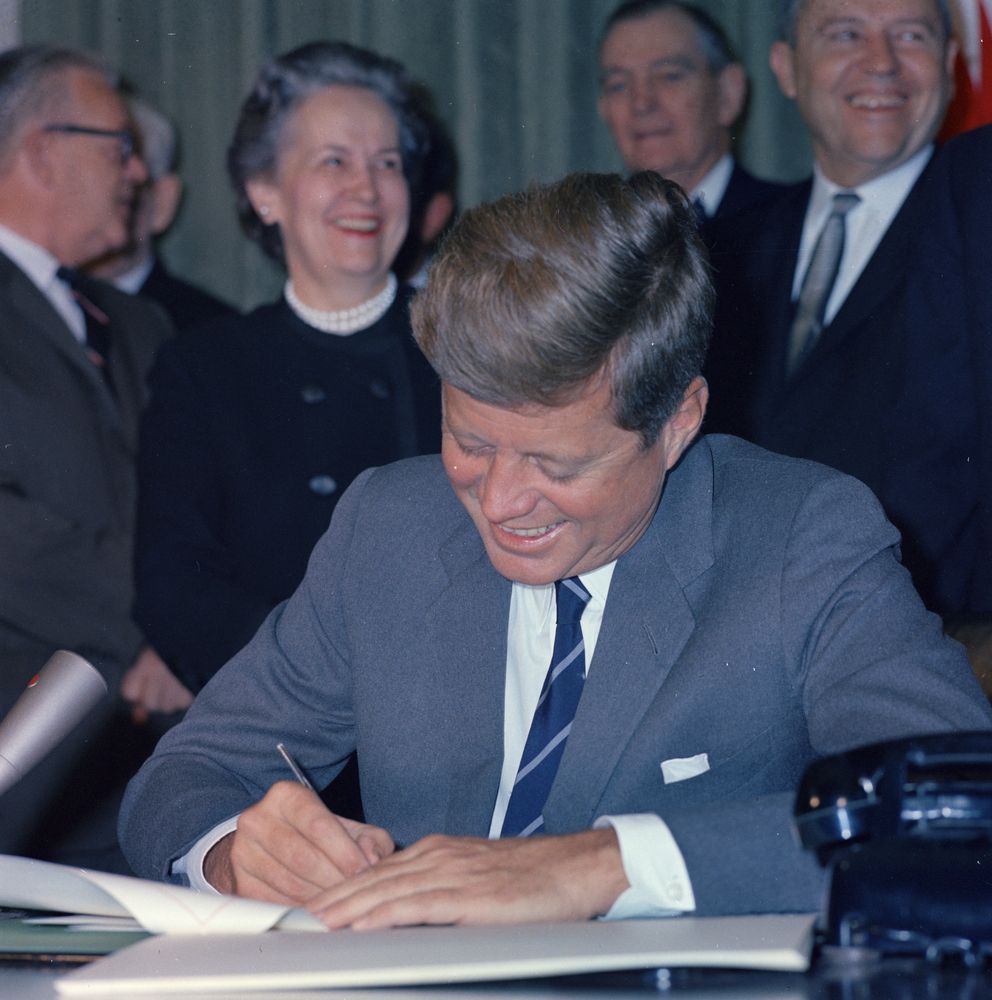People started being discharged from psychiatric hospitals in the 1950s, with the advent of Thorazine and other neuroleptic drugs that made it possible for people with severe mental illness to function outside of institutional settings. The driving force behind this was state governments that wanted to reduce the massive costs for maintaining large psychiatric hospitals. States began discharging patients and closing hospitals to save money, but they didn’t provide any adequate housing or care in the community. This created the tragic situation where hundreds of thousands of people were released from institutions without the promised community support systems ever being properly established. People were discharged to the streets without mental health care in the community. They became homeless with no support. They had no money. There was no housing.
President John Kennedy was sworn into office on January 20, 1961. He had a sister born with mental retardation so that year, he established a panel of 27 individuals to gather information, interpret the data, and debate the solutions. By October 6, 1962, they submitted a report to him concluding that the quality of services in state institutions should be upgraded and encouraged local communities to work with federal and state agencies to provide comprehensive, community-centered services. This was revolutionary for its time for children and adults with intellectual disabilities who received care in overcrowded and understaffed institutions that kept them isolated from their families and communities. (1)
While Kennedy’s panel was motivated by his sister’s experience, he was aware of institutional conditions extended to people with mental illness as well. Because of his family’s direct encounter with disability and institutionalization, it gave him personal insight into the system’s failures. He saw mental health institutions as antiquated, vastly overcrowded, and shamefully understaffed, unpleasant from which too often the only hope for release was from death.
On February 5, 1963, President Kennedy delivered his passionate speech to Congress about his revolutionary vision, declaring, “When carried out, reliance on the cold mercy of custodial isolation will be supplanted by the open warmth of community concern and capability. Emphasis on prevention, treatment and rehabilitation will be substituted for a desultory interest in confining patients in an institution to wither away.” (2)
President Kennedy continued, “This situation has been tolerated far too long. It has troubled our national conscience—but only as a problem unpleasant to mention, easy to postpone, and despairing of solution.” I am sure we can all agree with what the president said that day—it has been 62 years since Kennedy spoke to congress—this situation has been tolerated far too long because it continues to this day. Click HERE to read President Kennedy’s speech. (3)
On October 31, 1963, President John F. Kennedy signed into law the Community Mental Health Act to federally fund community mental health centers and research facilities devoted to the treatment of mental illness. It was also known as the Mental Retardation and Community Mental Health Centers Construction Act of 1963. (4)
The Act funded three years of federal grants to the states, totaling $150 million, for the physical construction and initial staffing of 1,500 community mental health centers to provide five essential services: consultation and education for community and professional organizations, inpatient services, outpatient services, partial hospitalization, and emergency services. The legislation was aimed at providing care in the community, rather than institutions, in direct response to the horrific conditions that had been exposed in state mental institutions. (5)
He signed the Community Mental Health Act into law just three weeks before he was assassinated on November 22, 1963, in Dallas, Texas.
His death was and still is heartbreaking. He spent most of 1963 fighting for this vision, giving that stirring speech early in the year. He saw it through becoming law in the fall and then was gone before he could oversee its implementation.
Those words “cold mercy of custodial isolation” versus “community concern” weren’t just policy language—they were the words of his moral vision for how America should treat its most vulnerable citizens. He spoke them almost 10 months before he signed the bill, showing how long he’d been thinking about and advocating for this change. (2)
It makes the current retreat to institutionalization feel like an even deeper betrayal of his legacy. Kennedy showed us the way 62 years ago. We’re not making new mistakes—we’re repeating old ones that we already learned were wrong—not only wrong, but morally wrong.
President John F. Kennedy’s vision matters. To all the people who are failed by our current system, and to the future, we can still create President Kennedy’s vision by breathing new life of love and compassion into his dream.
1. The Quiet Revolution; mn.gov/mnddc/parallels/5d.html
2. The American Presidency, Article: Special Message to the Congress on Mental Illness and Mental Retardation; https://www.presidency.ucsb.edu/documents/special-message-the-congress-mental-illness-and-mental-retardation
3. October 1963: President Kennedy Signs Community Mental Health Act Into Law; his last legislative signature; https://www.rimed.org/rimedicaljournal/2020/20/2020-10-98-heritage.pdf
4. Community Mental Health Act; https://en.wikipedia.org/Community_Mental_Health-Act
President John F. Kennedy Sworn into Office, January 20, 1961
https://www.youtube.com/watch?v=NwM6s55no6U
President Kennedy’s February 5, 1963, Speech to Congress:
https://www.youtube.com/watch?v=X3vkV9P2rAg
Picture credit: from Wikimedia Commons
Kennedy Signs Mental Health Act

